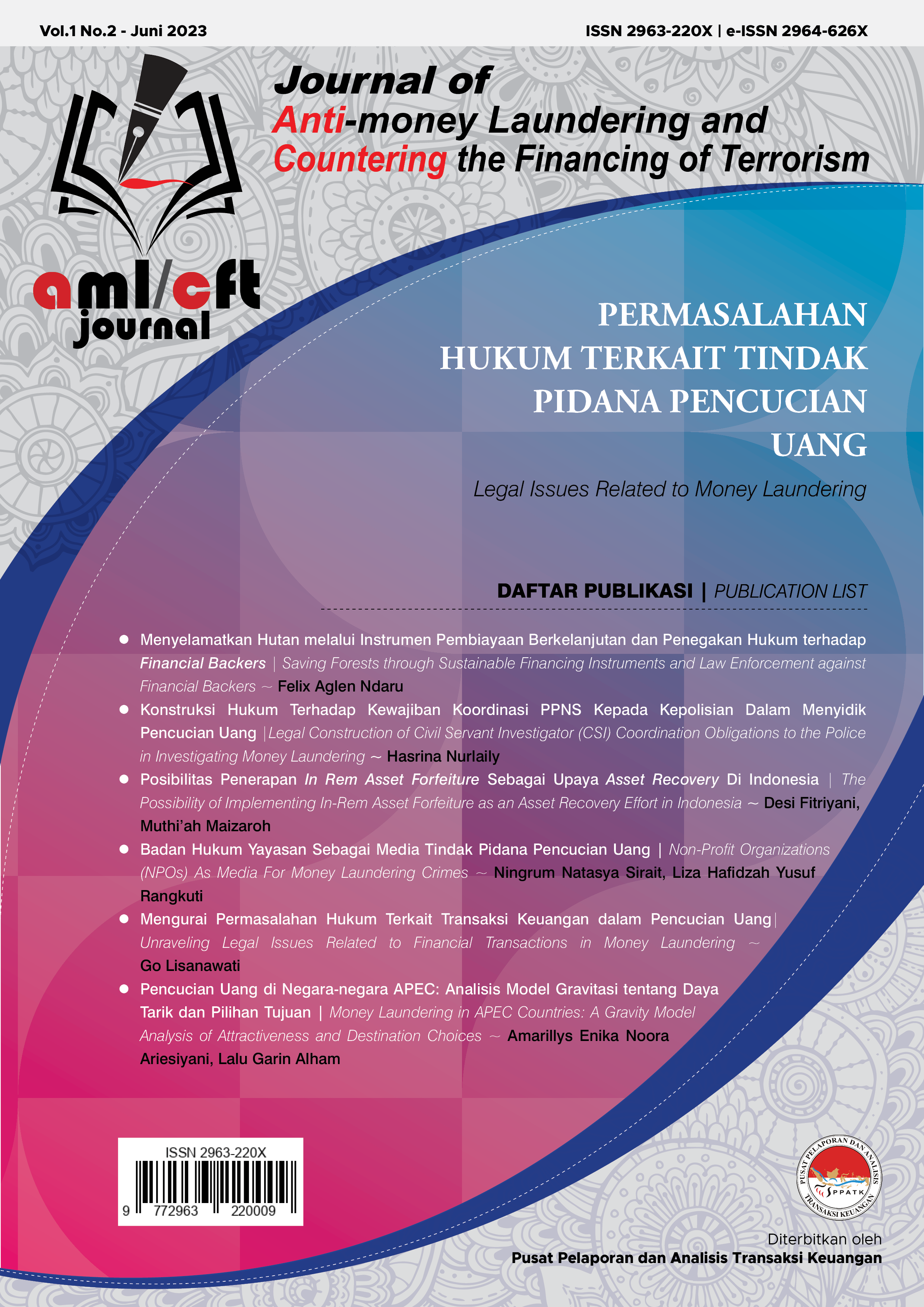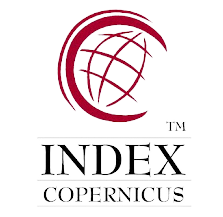Archives
-

Legal Issues Related to Money Laundering
Vol. 1 No. 2 (2023)With gratitude to the presence of Allah SWT, we are pleased to present the second edition of the "Anti Money Laundering and Counter Financing Terrorism Journal (AML-CFT Journal)." This journal is an initiative by PPATK (Financial Transaction Reports and Analysis Center) to provide a platform for practitioners, academics, researchers, and for those who has concerned in the field of Anti-Money Laundering and Counter Terrorism Financing (AML/CFT) to address global and national challenges in combating Money Laundering (ML) and Terrorism Financing (TF).
In this edition, we have received valuable support from the INTRAC Leaders and Academics/Experts who are aligned with the journal's vision to become a leading source of information, supporting the dissemination of studies in the field of ML and TF prevention and eradication nationally and globally. One of the milestones towards this goal is the accreditation of AML-CFT Journal, both nationally (SINTA) and internationally (Scopus).
Therefore, starting from this second edition, we have made some adjustments on the management side, such as inviting collaborations from various parties to strengthen the editorial board and reviewers, both at the national and international levels. Additionally, we actively encourage participation from academics, practitioners, and observers in the AML/CFT field to submit their work to this journal. To enhance the quality, we have implemented a two-stage article selection process: first, selection through editorial board meetings, and second, double-blind peer review by two experts. Through this process, six articles that meet the criteria have been selected for publication in the AML-CFT Journal, Volume 1, Number 2. In line with the efforts towards international accreditation, each article in the AML-CFT Journal is published in two languages: Indonesian and English.
Of the six published articles, the overarching theme focuses on legal issues related to ML. Each article provides in-depth research, analysis, and diverse perspectives on crucial issues in law enforcement and ML prevention.
Before closing this editorial, we acknowledge that the presence of this second edition journal is a result of the commitment of the editorial team and secretariat, the contributions of the authors, and the support and collaboration of various parties, including our mentors and PPATK Leaders. We hope that through this journal, our readers will gain a better understanding of the latest developments in ML prevention efforts and acquire insights into the strategies that can be implemented to achieve a financial crime and terrorism-free environment.
Happy reading!
Regards,
Agung Andiojaya





















